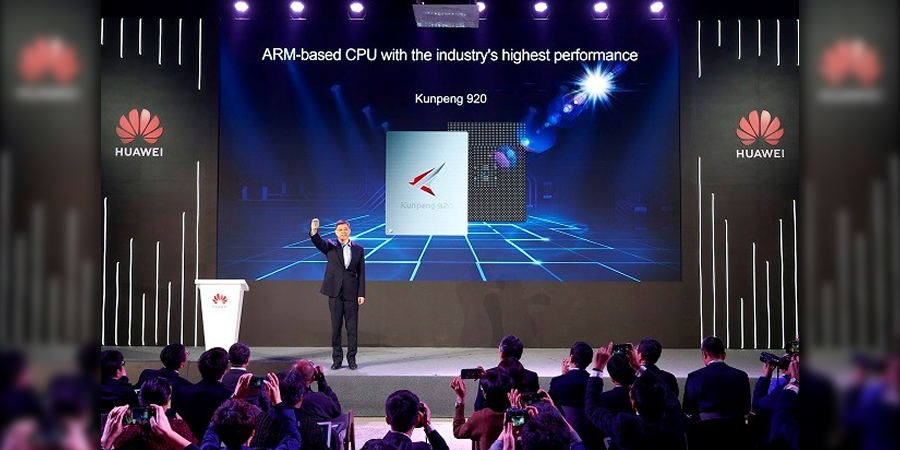Huawei announced the industry's highest-performance Advanced RISC Machine (ARM)-based CPU. The new CPU, dubbed Kunpeng 920, is designed to boost the development of computing in big data, distributed storage, and ARM-native application scenarios. Huawei will join with industry players to advance the ARM industry and foster an open, collaborative, and win-win ecosystem, taking computing performance to new heights.
“Huawei has continuously innovated in the computing domain in order to create customer value. We believe that, with the advent of the intelligent society, the computing market will see continuous growth in the future. Currently, the diversity of applications and data is driving heterogeneous computing requirements. Huawei has long partnered with Intel to make great achievements. Together we have contributed to the development of the ICT industry. Huawei and Intel will continue our long-term strategic partnerships and continue to innovate together,” said William Xu, Director of the Board and Chief Strategy Marketing Officer of Huawei.
“At the same time, the ARM industry is seeing a new development opportunity. The Kunpeng 920 CPU and TaiShan servers newly released by Huawei are primarily used in big data, distributed storage, and ARM-native applications. We will work with global partners in the spirit of openness, collaboration, and shared success to drive the development of the ARM ecosystem and expand the computing space, and embrace a diversified computing era.”
Kunpeng 920 is the industry's highest-performance ARM-based server CPU. Using the cutting-edge 7nm process, the CPU was independently designed by Huawei based on ARMv8 architecture license. It significantly improves processor performance by optimizing branch prediction algorithms, increasing the number of OP units, and improving the memory subsystem architecture. At typical frequency, the Kunpeng 920 CPU scores over 930 in the SPECint Benchmarks test, which is 25% higher than the industry benchmark. At the same time, power efficiency is 30% better than that offered by industry counterparts. Kunpeng 920 provides much higher computing performance for data centers while slashing power consumption.
Kunpeng 920 integrates 64 cores at a frequency of 2.6 GHz. This chipset integrates 8-channel DDR4, and memory bandwidth exceeds incumbent offerings by 46%. System integration is also increased significantly through the two 100G RoCE ports. Kunpeng 920 supports PCIe 4.0 and CCIX interfaces, and provides 640 Gbps total bandwidth. In addition, the single-slot speed is twice that of the incumbent offering, effectively improving the performance of storage and various accelerators.
Huawei TaiShan, ARM-based server with the industry’s best performance
Huawei also released its TaiShan series servers powered by Kunpeng 920, including three models: one with a focus on storage, another on high density, and a third focused on balancing both requirements. The TaiShan servers are built for big data, distributed storage, and ARM-native application scenarios. The ARM architecture is best suited for these scenarios with advantages in many-core and performance per watt.
TaiShan will enable computing platforms with high performance and low power consumption for enterprises. For example, in big data scenarios, the TaiShan servers are tuned for optimal many-core high concurrency and resource scheduling to deliver a 20% computing performance boost. Based on the TaiShan servers, Huawei Cloud also provides elastic cloud services, bare metal services, and cloud phone services.
“With Kirin 980, Huawei has taken smartphones to a new level of intelligence. With products and services (e.g., Huawei Cloud) designed based on Ascend 310, Huawei enables inclusive AI for industries,” William Xu noted. “Today, with Kunpeng 920, we are entering an era of diversified computing embodied by multiple cores and heterogeneity. Huawei has invested patiently and intensively in computing innovation to continuously make breakthroughs. We will work with our customers and partners to build a fully connected, intelligent world.”
